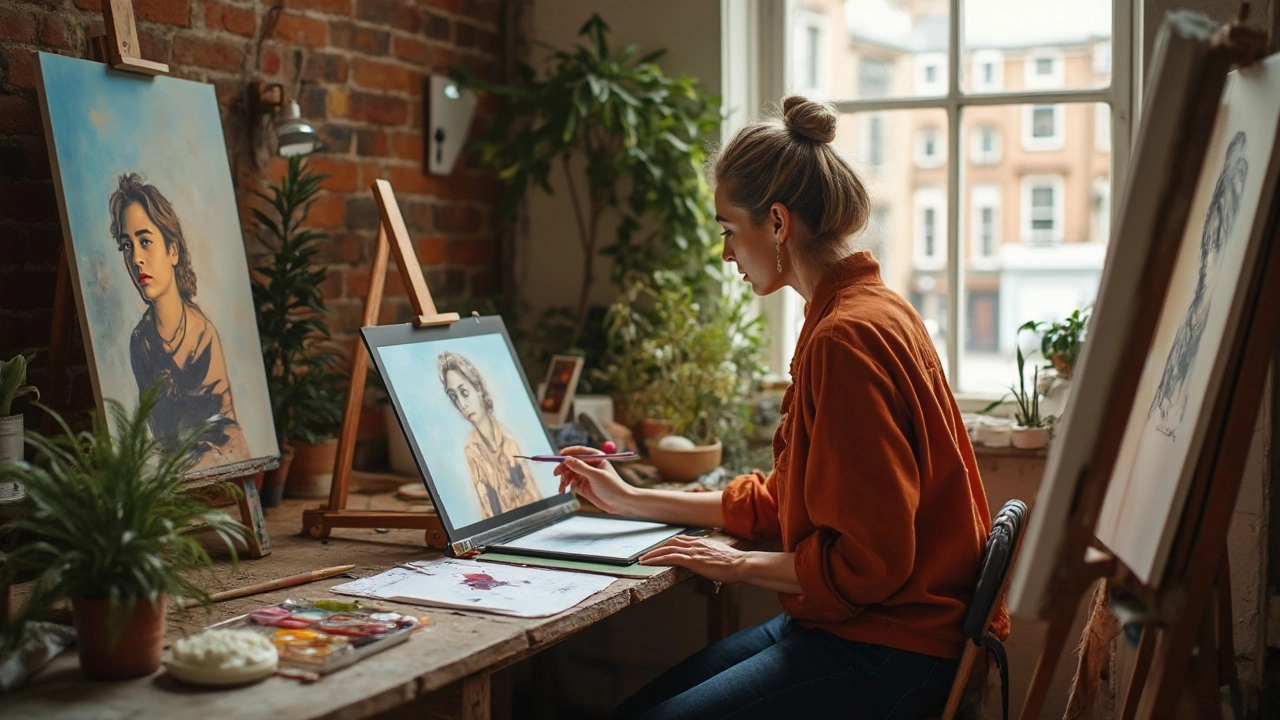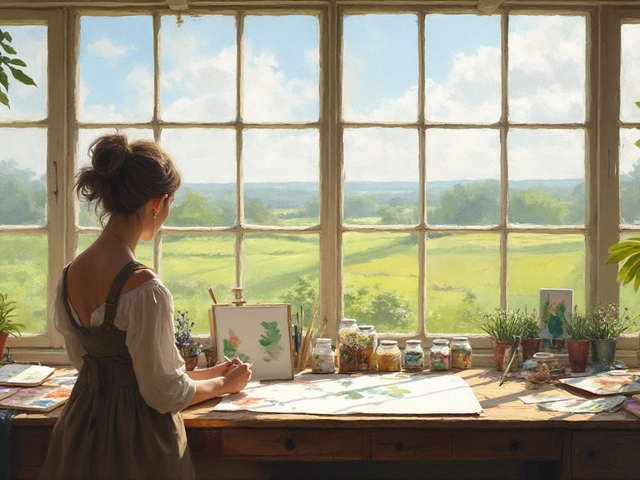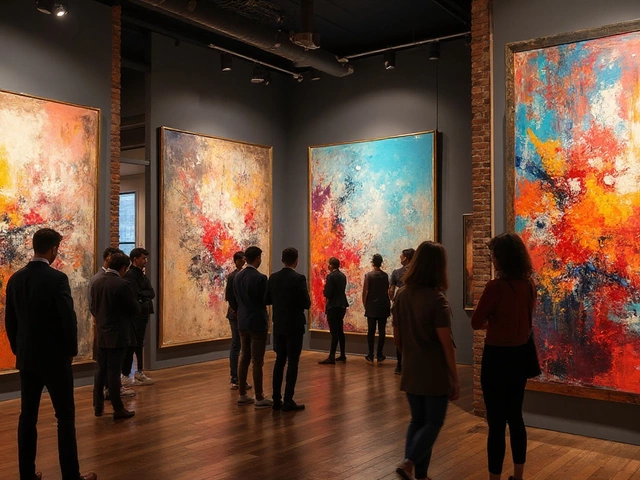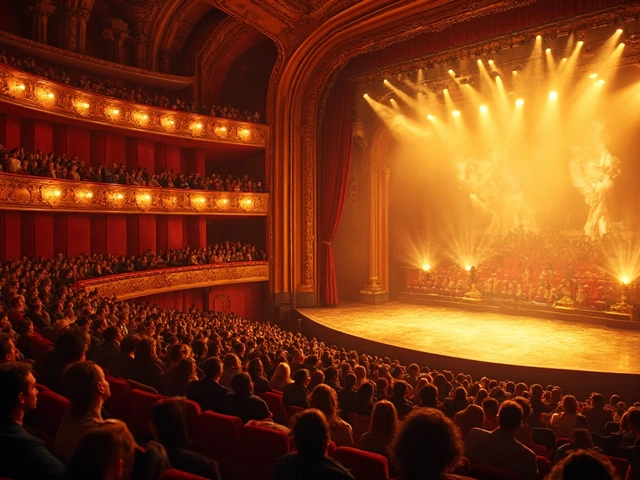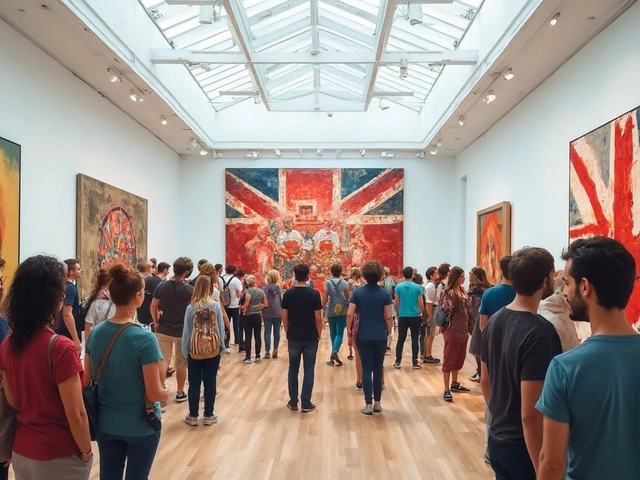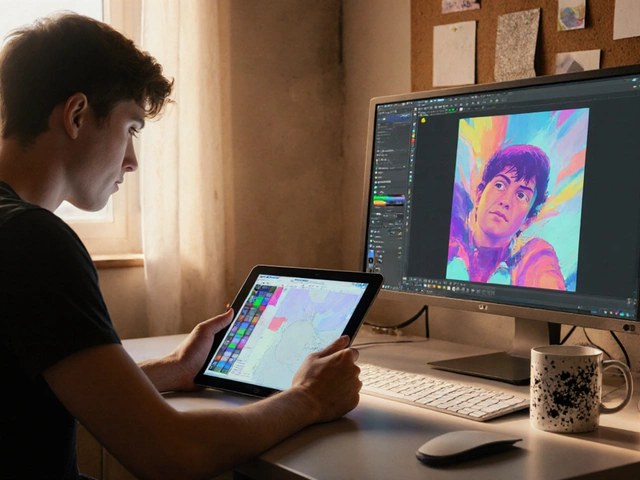Ever wonder if portrait painters are still a thing these days? They totally are! In fact, they're not just surviving; they're thriving and adapting in pretty cool ways. Despite living in a world flooded with selfies and digital impressions, there's something timeless and unique about a portrait painted by hand.
Back in the day, a portrait was a serious statement about status and identity. Fast forward to now, and it’s become a creative playground for artists to express way more than just a person's likeness. Imagine having a piece of art that's as much about capturing the soul as it is about the face. That's the magic these artists bring to the table.
But you might be thinking, 'Who even wants a portrait nowadays?' Surprisingly, plenty of people do! Whether it’s celebrating a milestone, creating a legacy piece, or just wanting something personal to pass down generations, the demand is real. And for those of you dabbling with brushes or considering it, stick around! We'll dish out some practical tips on diving into the world of portrait painting—because who knows? Your masterpiece might be just a canvas away.
- The Evolution of Portrait Painting
- Modern Portrait Artists
- Why People Still Commission Portraits
- Challenges in Contemporary Portrait Painting
- Tips for Aspiring Portrait Artists
- The Future of Portrait Painting
The Evolution of Portrait Painting
Portrait painting has quite a fascinating history. It's one of those art forms that seems to have been around forever, popping up in various cultures around the globe. Originally, portraits were reserved for the wealthy; think kings, queens, and all those important figures who wanted to cement their legacy in oil and canvas.
During the Renaissance, portrait painting really hit its stride. Artists like Leonardo da Vinci and Albrecht Dürer mastered the art of capturing not just the likeness but the very essence of their subjects. Da Vinci's Mona Lisa, for example, isn't just a portrait; it's a masterpiece that still intrigues art lovers with that mysterious smile and eye-catching detail.
The Modern Twist
Fast forward to the contemporary era, and things have taken a wild turn. Modern artists are pushing the boundaries, using portrait painting to explore identity, culture, and even socio-political themes. Pop art icon Andy Warhol took the celebrity portrait game to another level, with his famous Marilyn Monroe series proving that portraits could be both commercial and cutting-edge.
Now, we have artists incorporating digital methods and experimenting with mixed media. We're talking about everything from photo-realistic portraits that could be mistaken for photographs to abstract representations that make you stop and ponder.
The Digital Age
In today’s digital world, you might think the art of painting someone’s likeness is outdated. Not even close! Digital portrait artists are tapping into technology, using tablets and software like Procreate to create stunning artworks that are just as impactful as those done with traditional paint and brush.
While traditional methods are still cherished for their uniqueness and physicality, the digital realm allows artists to reach a wider audience through online galleries and social media platforms. It’s easier than ever to share your work and get noticed, which is both exciting and challenging for new artists.
Modern Portrait Artists
When it comes to modern portrait artists, they’re shaking things up and redefining what it means to capture a person’s essence. Today, many artists are breaking free from traditional styles, using new mediums and techniques to tell stories through their work.
Blending Traditional and Digital
One cool trend is the fusion of traditional painting methods with digital tools. Artists like Sacha Jafri, known for his charity and visionary pieces, use technology to add layers and depth that were unimaginable a few decades ago. This mash-up allows for more creativity and expanded reach, as artists can share their work around the globe with just a few clicks.
Notable Names
Speaking of blending past and present, Kehinde Wiley is a portrait artist who has gained fame for his unique twist on classic portraiture. By placing people of color in traditional, regal settings, he sends a powerful message that resonates widely. Equally noteworthy is Amy Sherald, who famously painted the official portrait of former First Lady Michelle Obama. Her striking use of grayscale and bold backgrounds pushes her subjects' individuality to the forefront.
Diversity and Inclusion
Modern portrait artists are also emphasizing diversity and inclusion in their subjects and styles. This movement not only broadens the scope of art’s representation but makes the craft more accessible for newer generations interested in seeing themselves reflected in works of art. Newcomers like Genesis Tramaine are taking cues from their cultural roots and personal experiences, bringing fresh perspectives to the portrait scene.
| Artist | Style | Notable Work |
|---|---|---|
| Kehinde Wiley | Regal and classical with contemporary subjects | "Napoleon Leading The Army Over The Alps" |
| Amy Sherald | Grayscale with bold colors | Michelle Obama's official portrait |
So, there you have it. Modern portrait artists are all about innovation, inclusivity, and making meaningful connections. Whether you're an art enthusiast or someone considering commissioning a portrait, knowing about these trailblazers can enrich your appreciation and experience of portrait painting.
Why People Still Commission Portraits
Despite all the tech we have today, folks still love getting their portraits painted. It's not just about hanging something pretty on a wall; there are deeper reasons that touch on identity, legacy, and personal expression.
Creating Personal and Unique Art
Unlike a photograph, a painted portrait can capture not just the appearance but the essence of a person. Artists bring their unique vision and style to the process, which makes every piece one-of-a-kind. Think of it like having your personal piece of art history!
Commemorating Milestones
Personal achievements, family landmarks, or memorable moments—these are perfect reasons people turn to portrait painting. Whether it's a wedding portrait, a newborn in the family, or a retirement gift, these portraits turn moments into timeless memories.
A Sense of Legacy and Tradition
There's something timeless about handing down a family portrait through generations. It’s like passing your story onto the next, making it a popular choice for those with a taste for tradition and history.
For the Sheer Love of Art
Some folks commission portraits simply because they love art. They appreciate the skill and creativity involved and want to own something that reflects that. These masterpieces are talking points in their homes and act as a testament to their personal taste and culture.
Investment Angle
Art can be a good investment. Paintings, especially by recognized modern portrait artists, can appreciate in value. It's like a double win—enjoy art today, potentially profit tomorrow.
Overall, portrait painting might have old-school roots, but its relevance stays evergreen for anyone looking to capture the human essence in more ways than a snapshot can.
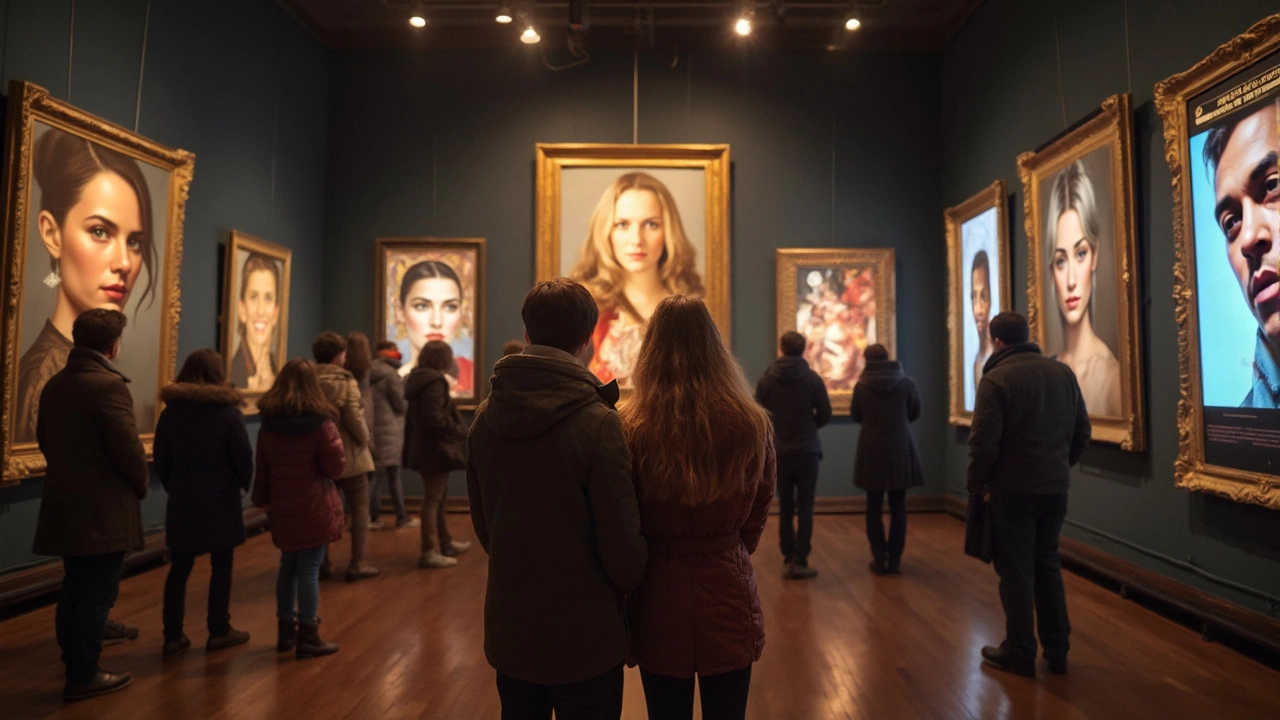
Challenges in Contemporary Portrait Painting
Diving into the world of portrait painting today isn't as straightforward as it used to be. Modern artists face a unique set of hurdles, and some of them can feel pretty daunting. But understanding these can help both artists and art lovers appreciate the craft even more.
Competition with Digital Art
One big challenge is the rise of digital art. With its ease of use and growing popularity, digital tools sometimes overshadow traditional methods. It’s not uncommon for artists to feel pressure to adapt to digital mediums, despite wanting to stick with paintbrushes and canvases.
Capturing Authenticity in a Fast-Paced World
In a society where everything moves at lightning speed, taking the time to sit and paint a thoughtful portrait is almost a rebellious act. Artists have to balance capturing their subject’s essence with the reality of fleeting attention spans. This requires not just technical skill but a deep understanding of human nature.
Economic Pressures
The art world can be unpredictable, and relying solely on portrait commissions isn’t always sustainable. Artists often diversify, offering classes or creating other forms of art to make ends meet. There’s a real pressure to market themselves effectively without sacrificing authenticity.
Maintaining Relevance
Another hurdle is staying relevant in the ever-evolving art scene. Artists must find ways to keep their work fresh and innovative. Sometimes this means blending new techniques with traditional ones or stepping out of their comfort zones to experiment with style.
While all these challenges make portrait painting sound like a tough gig, they also create room for creativity and growth. It pushes artists to think outside the box, and ultimately, that's what keeps the art form alive and kicking in today’s world.
Tips for Aspiring Portrait Artists
Thinking about getting into portrait painting? Awesome! It’s a fantastic way to blend creativity with technical skill. Let's break down some steps and tips to help you dive right in.
Start with the Basics
To begin with, lock down those foundational skills. Understanding anatomy, proportions, and light is super important. You don’t have to be a medical expert, but knowing where the key facial features are makes a big difference. Dive into sketching from life or photos, and get a feel for different faces and expressions.
Pick Your Tools Wisely
The right tools can make or break your experience. If you’re just starting out, try various mediums. Watercolors, oils, and acrylics each have their own vibe. Some artists swear by oils for their rich texture, while others love the unpredictability of watercolors. Experiment, and see what clicks with you!
Practice, Practice, Practice
Duh, right? But seriously, putting in the time can’t be stressed enough. Set aside regular painting sessions, and don’t worry if your early attempts don’t Picasso anyone. Consistency over perfection is key.
Find Your Style
As you practice, a unique style might start to emerge. Maybe you lean towards realism, or perhaps a more abstract approach resonates with you. Embrace it. Remember, there’s no single way to portray someone’s spirit on canvas.
Engage with Other Artists
Mixing it up with fellow portrait artists can offer fresh insights and inspiration. Join local art clubs, or explore online communities. Constructive feedback is pure gold for growth. Plus, it's always nice to have people who get the struggle and triumph of modern art.
Keep Up with Trends
Even classic art isn’t immune to change. Check out what’s trending in the art world. Maybe a new technique has caught on, or there’s an art show with eclectic styles. Staying updated can spark new ideas or help refine your voice.
Portfolio and Exposure
Last but not least, document your journey. Create a portfolio showcasing your work. Whether it’s a snazzy Instagram profile or a more traditional portfolio, exposure is the ticket to bigger opportunities.
Quick Stats to Remember
| Aspect | Importance |
|---|---|
| Practice Hours Weekly | 5–10 hours |
| Tool Setup Cost | $50–$300 depending on materials |
Dive in, have fun, and remember—every portrait you paint is a step toward mastering the craft. Good luck!
The Future of Portrait Painting
So, what does the future hold for portrait painters in our ever-evolving art scene? It's actually looking pretty bright. Despite the crazy pace at which digital technology advances, modern art continues to carve out its niche, mixing classic techniques with new-age tools.
First off, there's the tech factor. Artists are starting to use things like virtual reality and digital brushes, which open up a whole bunch of creative possibilities. Talk about taking art to another dimension! These new tools help artists reach wider audiences, too, making it easier for more people to appreciate the unique touch that traditional brushstrokes bring.
Tech Meets Tradition
One of the coolest trends is how artists blend traditional and digital methods. Imagine the stroke of a brush captured in high-def on a screen, ready to be tweaked and perfected. It’s like customizing your experience with both worlds. It's not about choosing between tech and tradition; it's about finding a way for them to complement each other.
Access and Global Reach
With the internet, aspiring portrait artists have unprecedented access to educational resources and inspiration. Online platforms showcase work to global audiences, helping artists get a foot in the door without needing a gallery rep. Imagine learning techniques from pros across the world without leaving your room! The accessibility factor is definitely fueling a growing interest in the craft.
Here's something interesting: A lot of younger artists are bringing social and cultural themes into their work, making portraits that speak beyond personal likeness. It’s about telling stories and sharing messages, giving portraits a fresh and modern twist. This is why today's portrait painting is not just surviving—it's pushing boundaries.
The demand for such creative outlets suggests that as long as artistic value is appreciated, the art of portrait painting will have its learners and admirers. Whether they stick with oils or pivot to pixels, these artists are redefining what it means to capture a person's essence, ensuring that the appeal of handcrafted portraits never fades away.
